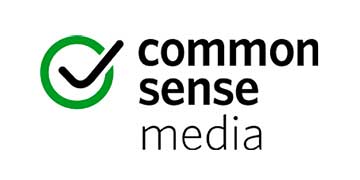
Common Sense Media

Executive Summary
Common Sense Media is a nonprofit dedicated to improving the lives of kids and families by providing the trustworthy information, education, and an independent voice they need to thrive in the 21st century. Common Sense delivers tailored content to and actively engages with families, educators, and advocates. But creating content unique to its constituents and understanding how they engaged with the organization was a challenge. With duplicate data stored in multiple siloed systems, Common Sense’s growth was hampered by a lack of alignment in its technology. “Before Salesforce, we had deeply entrenched organizational silos, operating independently of one another, sometimes seemingly with different missions. It was a classic case of the left hand not knowing what the right hand was doing,” said Gordon Lee, CSM’s Salesforce Solutions Architect.
Social media was similarly fractured. Common Sense operates three unique properties across eleven social media channels. Running these through two separate publishing tools with no mutual visibility into the content or strategy driving them, Common Sense quickly found its ability to increase social reach and engagement hampered. To most effectively drive and respond to the public conversation around its mission, Common Sense needed to streamline its engagement efforts and create a singular voice for the organization.
-
300%growth in number of donors over 4 years
-
50%of online donations have increased
Two Goals: One Objective
Common Sense had two interdependent goals:
- Create a single platform with which it could manage donor events as well as integrate its member management and email communications, and
- Elevate its social media—a key engagement vehicle for its programs—to deliver relevant, meaningful content.
Having previously built a single, heavily customized instance to track events and donations, additional member data was stored in multiple separate systems. Common Sense was looking for something to pull all the pieces together. It selected the Salesforce Nonprofit Success Pack (NPSP) as its CRM and a platform that would scale as the organization grows. “If our organization wasn’t run off a single platform, we would only be able to make incremental changes.” says Lee. “With Salesforce we can make scalable changes that will meet our growing needs.”
The organization also reviewed several social media tools, including Hootsuite Enterprise, Adobe Social, Simply Measured, as well as Salesforce Social Studio. Ultimately, Common Sense chose Social Studio. It was the only all-in-one publish, engage, listen, and analyze tool that helped to consolidate all of the multiple pillars and multiple channels.
“If you’re engaged, there’s more brand awareness, and increased brand awareness opens the doors to bigger impact. Salesforce enables us to do that in a strategic and cost-effective way.” Gordon Lee, Salesforce Solutions ArchitectCommon Sense Media
Realizing a Strategy, Deferred
After implementing Social Studio, Common Sense immediately saw results and better engagement with its audiences. Seven months after its launch, using Social Studio had increased Common Sense’s social post volume by 88%. Average monthly social impressions increased by almost 60%. Total followers increased by 16%. All of Common Sense’s social channel managers have since adopted the tool and employed new campaigns and engagement strategies.
With access to centralized data, event managers can now find and engage members within 25 miles of a scheduled event in areas of specific interest to them. Said Lee, “If you’re engaged, there’s more brand awareness, and increased brand awareness opens the doors to bigger impact. Salesforce enables us to do that in a strategic and cost-effective way.”
Siloed Data and an Unclear View of Constituents
With 2 and a half million contacts in its database, Common Sense needed personalization that could scale.
“Building a world that works for kids is a big job and requires many members and more importantly, different kinds of members; parents, teachers, and advocates for policy change. This means our strategy requires segmentation, differentiation, and the ability to speak to people about the topics that they are interested in as opposed to one multi-faceted mission” says Paul Holman-Kursky, Director of Membership.
Being a member-based organization, Common Sense needed to clearly identify and engage with its constituents across all of the organization’s cause areas; media, education, and advocacy. Previously, registration data from its websites, newsletter subscriber lists, fundraising databases, and other systems related to its member base were not centralized, and thus didn’t provide a comprehensive view of those being communicated with.
Common Sense was able to integrate all of its various systems into NPSP, which gave Common Sense clarity about the size of its member base, the areas of overlap among its different audiences, its members’ interests, and the ways in which they interact with Common Sense across its properties. The resulting level of detail and insight enables Common Sense to better understand its audiences, and therefore more efficiently communicate with them in the appropriate channels. For example, said Holman-Kursky, the organization realized that its advocacy newsletter subscription list is disproportionately composed of educators.
Now, when Common Sense announces advocacy and policy initiatives, it often develops specific messaging about them for its educator newsletter so it can make sure to spread the word among a particularly receptive group.
Personalized Messages, Better Engagement
For its 15 year anniversary, Common Sense launched an interactive microsite celebrating milestones and successes throughout its history. It also served as a tool for user acquisition. The new campaign’s email signup mechanism allowed audiences to select and learn more about their specific areas of interest, including content aimed at parents and families, educators, and advocates.
“I don’t want to talk to everyone in the same way when they are first engaging with us. Using Journey Builder, I can set up different paths of interest, so the content members people are receiving is based on the preferences users express to us and the content that engages them within the emails themselves,” says Paul.
The journey also includes calls to donate to support Common Sense’s work. These donation CTAs are different for recipients who are existing donors vs those who have yet to give. Whether it’s thanking people for their continued support or asking if they would like to get involved financially for the first time, this truly personalized engagement is now possible thanks to all of a member’s data being located on NPSP, versus siloed across multiple spreadsheets and databases.
A Complete View Of Donors
Initially Common Sense was using Salesforce for their fundraising efforts only to record gifts and house contact information, which was helpful, but didn’t provide the insight they needed to accomplish their ambitious fundraising goals. There were missing details and critical touch points were tracked outside of Salesforce.
“We were drowning in excel spreadsheets, word documents, event rosters, it was madness.” Says Jacqueline Carambat, Director of Development and Operations. There was no single source of truth for donor pipelines or event attendees, no understanding of where donors were coming from, and which engagements the organization was having with them. All of this resulted in extensive manual work being done in various databases, and ultimately an unclear view of the donor.
Common Sense then began to use NPSP as the one customizable database to track all things fundraising, a one stop shop for its development team. This has allowed its team to utilize real time dashboards and reports and greatly reduce the use of spreadsheets. Data needed for Board Meetings went from taking hours to compile to just minutes. Common Sense now has a full circle view of donors and can pull information about how they came into the Common Sense ecosystem, their interests, activities, and how the team has engaged with them. This of course ties directly back into their strategy to engage with their constituents on a personal level.
“Those on the receiving end of our communications now feel more spoken to and are more motivated to give and continue their support” says Jacqueline. The results speak for themselves with the average online donation increasing by 50%.
Explore the Solutions:
Nonprofit Success Pack
Marketing Cloud Engagement for Nonprofits
Memberships Allow For Highly Customized Content
Most recently, Common Sense launched Common Sense Media Plus, which offers members personalized recommendations for movies, TV shows, books, and games based on their kids’ ages and their family’s unique interests and preferences. Members enter these preferences on the Common Sense Media website, from which they’re fed into Salesforce. This enables Common Sense to develop a complete view of its members, and to deliver dynamic, personalized Entertainment Guide emails to all Plus members using a single Marketing Cloud Engagement email template. Since their introduction, these hyper-targeted emails have averaged open rates of 30% and above, and clickthrough rates averaging close to 10%. In addition, when someone reaches out with a support request, utilizing Service Cloud, Common Sense can easily identify whether they are a paying member or donor and ensure those respective requests are dealt with as quickly as possible.
Huge Growth, Huge Promise
Having one database not only allows a complete view of constituents and personalized engagement, but ensures the Common Sense team can collaborate more effectively. The development and marketing teams are able to join forces seamlessly on campaigns and the results are undeniable. In the past four years they have seen 300% growth in the number of donors. Common Sense is continuing to improve it’s efficiencies and adopt new products, the goals are ambitious, but when it comes to preparing the future generation, they know they have to be.